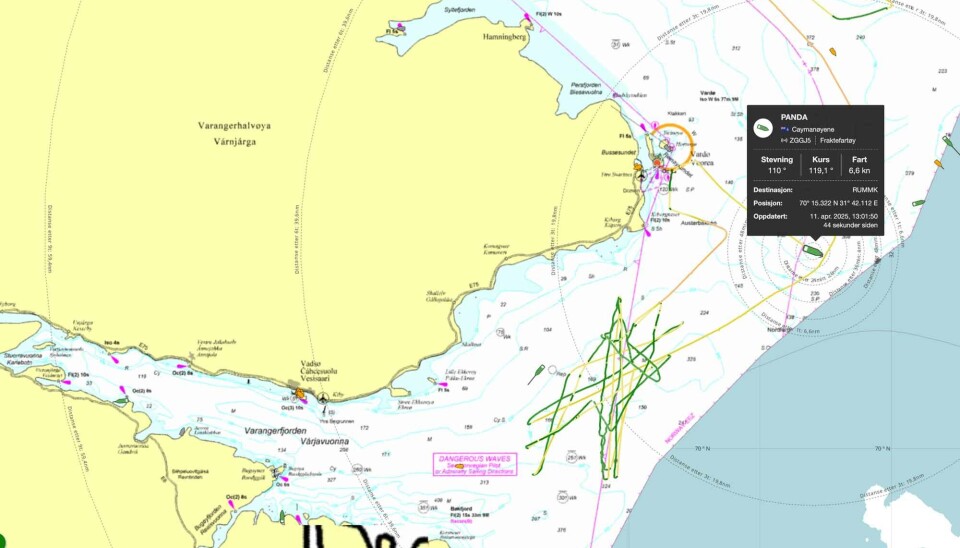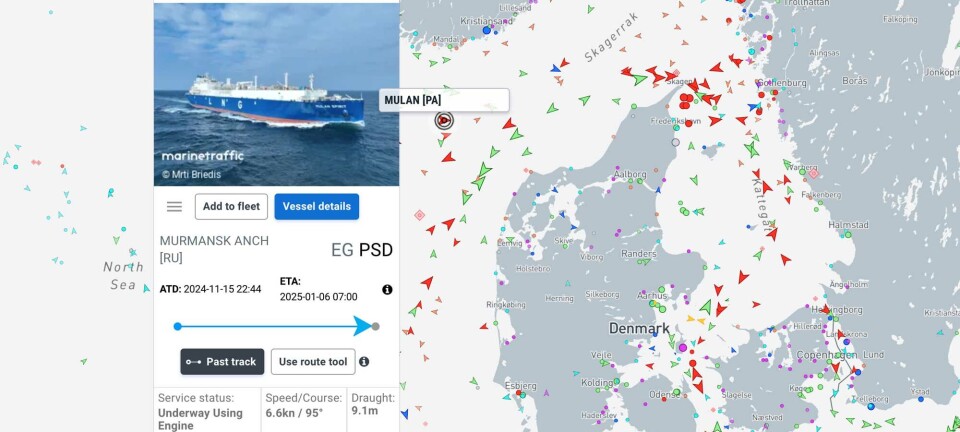
Bulk carrier en route to Murmansk zigzags three days in Varanger Fjord
The 180 meter long ship for more than three days zigzagged in the waters near key Norwegian military installations before it sailed across the maritime border to Russia.
According to the ship's agent, the Panda sailed into the Varanger Fjord to hide from a raging storm and to change crew.
The bulk carrier was on its way from the Turkish port of Iskenderum to Murmansk. Early on April 8, it apparently made an abrupt course change and sailed towards the Norwegian fjord.
"It was bad weather in the area," ship agent Arve Henriksen at Henriksen Shipping Service says to the Barents Observer. He also confirms that the Panda needed to change crew.
"There were 5-6 Ukrainian crew members on board that understandably did not want to go to Russia," Henriksen explains.
The Panda remained in the Varanger Fjord long after the storm had ended. For more than three days, the 7-year-old carrier that is owned by the German company Johann M.K Blumenthal Gmbh, crisscrossed the area.
The crew change took place at sea around noon on April 11. Few hours later, the ship crossed the maritime border to Russia. It is due to arrive in Murmansk early on April 12.
Arve Dimmen at the Norwegian Coastal Administration confirms that the operation was planned in due time and that it proceeded in line with the regulations.
Norway has several military intelligence installations along the coast of the Varanger Fjord, including the Globus radars in Vardø.

At the same time as the Panda made it into the Varanger Fjord, the Norwegian Coast Guard ship KV Svalbard sailed to the same area.
According to the Norwegian military, there was no connection between the sailings of the two ships.
A press spokesperson for the Norwegian Joint Headquarters underlines to the Barents Observer that KV Svalbard sought refuge from the storm and that it was not in the area because of the Panda.
"We have good control in the area," the spokesperson adds.
Murmansk is key logistics centre in the Russian North. The region is also a heavily militarised area and many local ships are believed to be involved in intelligence gathering in neighbouring Norway and beyond for Russian security authorities.
Read also:
-

Shadow fleet tanker en route to Murmansk makes sudden port call in Kirkenes
-

Russia-connected 'shadow fleet' tanker escorted to Norwegian Arctic port
-

As two 20-year-old tankers from São Tomé & Príncipe leave Murmansk, the EU takes new measures against 'shadow fleet'
-

Sanctioned shadow fleet gas carrier zigzags between Norwegian oil platforms













